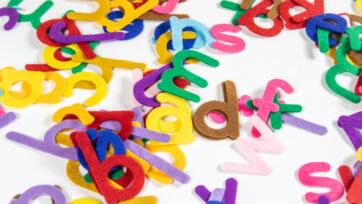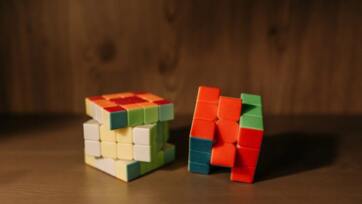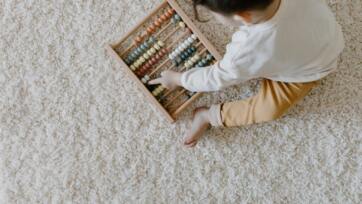Introduction
Educators now recognize that better learning happens when subjects are mixed to form new and effective teaching methods. We find the best results when math and art unite their strengths through activities that blend both fields. Colour-by-number quizzes serve as an effective demonstration of integrating artistic and mathematical learning experiences. The learning tasks help students express their creativity and boost their mathematical aptitudes in a pleasant environment. This piece studies the unique value of colour-by-number quizzes for artistic and mathematical training through a creative learning experience.
The Role of Art in Educational Development
Students need artwork in their studies to learn fully. It creates platforms for students to use their creativity and imagination while practicing small hand movements. Students achieve mental growth through creating colourful designs, which develops their thinking skills and problem-solving abilities. By working with math subjects, students learn complex ideas better through artistic activities instead of traditional learning methods. Using colour-by-number activities lets students combine mathematics with art in a way that teaches them both subjects effectively.
Mathematics in Education: Building Logical and Analytical Skills
Students learn to reason precisely while solving mathematics problems. The damaged structure of mathematical ideas creates obstacles for students when they try to study this subject. Combining art and mathematics using colour-by-number quizzes gives students an effective learning tool. The quizzes help students understand math better because they connect numbers to images visually. When students match colour with numbers, they develop number patterns and arithmetic skills before creating something they enjoy.
How Color-by-Number Quizzes Combine Both Disciplines
Colour-by-number quizzes show how easily you can unite art and mathematics concepts in one task. These tasks give students an image with numbered sections; every portion matches a certain colour. The main difficulty is matching the right colour to each numbered section of the picture design. Students must match mathematical numbers with correct colours while creating their drawings through this basic and pleasurable learning method. The activity helps students grow as artists and mathematics learners by showing how these subjects blend naturally.
Using Color-by-Number Zerts Builds Students' Mathematical Thinking Ability
Colour-by-number quizzes provide students with an enjoyable approach to improving their math abilities. The quiz questions match answers to math problems students must solve to find the right colour. Students achieve creative satisfaction through number-based activities and refine their understanding of numbers through mental arithmetic and problem-solving abilities. The colouring experience helps students remember important math ideas better by combining learning with fun activities.
Students Gain Creativity Skills and Improving Their Logic by Doing This Activity
Students develop creative thinking and logical reasoning more strongly when they do colour-by-number activities that mix math and art. The number-colour matching demands mental reasoning, yet students can express their colour concepts freely during the colouring part. Students improve their awareness of visual arrangement principles when recognizing key ways to use colours in different areas. Students enhance their thinking ability through self-analysis when they examine the image layout and evaluate which colour placement produces the best outcome.
Students benefit from seeing materials combined with them.
Colour-by-number quizzes combine visible learning with physical activities to teach better. Mathematical concepts become easier to understand because visual learners can see and colour numbers as images. Visual learning tools help students understand how numbers become cohesive parts of the real-world environment. This learning technique suits physical learners, allowing them to move and do activities. Students better remember and understand math by touching the colourful materials during their learning experience.
The approach works well for different ways students learn best.
These quizzes work well with different learners because they bring out learning strengths in both visual and physical students. People who learn through vision enjoy colourful pictures from these quizzes, and quiet listeners learn better through spoken directions about colours and numbers. When kinesthetic learners colour the worksheet, they can turn their comprehension into physical action. Colour-by-number quizzes empower different learners while allowing classrooms to reach all students with success opportunities.
The Learning Experience Becomes More Exciting When Students Engage with Their Subject Matter
Learning activities achieve better results when students feel motivated and want to participate. Students enjoy studying academic material more through colour-by-number quizzes because they use innovative and visually pleasing learning methods. Children see math practice as less boring when colouring pictures while completing problems. Students feel proud when they finish their quizzes, leading them to regard education optimistically. Colour-by-number math quizzes combine fun and creativity to excite students about further learning new subjects.
Incorporating Color-by-Number Quizzes in the Curriculum
Colour-by-number quizzes help teachers deliver lessons effectively in their regular lesson plans. Teaching staff can create these tests to match any subject taught across different student grades. Students at an early math’s skills phase can benefit from number identification and simple arithmetic tests through color-by-number quizzes. Senior students take colour-by-number quizzes that require them to solve word problems and put algebra into practice to pick the proper colours. The level of quiz difficulty changes according to student learning progress, so colour-by-number practice stays useful for all levels.
The Role of Color in Cognitive and Emotional Development
Using colours during educational activities provides mental and emotional development while creating a pleasing appearance. Colours help us manage our emotions during learning sessions and modify how we see and focus, making colour usage essential in learning tools. Colour-by-number match quizzes teach students math content while enabling them to discover creative benefits through colouring. Through colouring, students find the peace that allows them to concentrate better during educational activities. Students benefit emotionally when trying different colour schemes during their creative activities.
Our students learn greater patience through precise work.
Colour-by-number quizzes help students develop essential life skills, especially patience, concentration, and persisting. Participating in a colour-by-number quiz means students must read directions carefully and match numbers to colours precisely. They must allow enough time to create a visually appealing output. The gradual learning process helps students control their actions while working with care on each step. Students strengthen their focus and determination as they work through the entire quiz so they understand the significance of persistence and precise work in schoolwork and daily life.
The lessons create basic skills for better learning ahead.
Students create a successful path to learning as they practice using colour-by-number quizzes. Students can carry skills from these activities into their studies and other parts of their learning process. When children explore math through creative projects they build positive thinking towards even harder math subjects. The creative activity provides basic knowledge that students can use to explore different art subjects later, including design, colour principles, and visual arts. A student who learns many skills becomes stronger at solving all subjects in their studies.
The Therapeutic Benefits of Art and Math Integration
Connecting art and math in education creates important therapeutic results for students in addition to teaching objectives. Performing two subjects together helps students find inner peace. Art students can express themselves creatively, whereas math helps them develop cognitive thinking and logical reasoning abilities. Both subjects allow students to develop their minds and hearts effectively. When regular learning methods prove difficult, children can use colour-by-number quizzes as a more accessible way to understand lessons in a relaxed setting.
Inspiring Lifelong Learning through Creative Exploration
Teachers use colour-by-number quizzes to build everlasting student enthusiasm for learning. Students discover more ways to connect different knowledge areas when participating in these activities and experience their natural fascination with learning. Students who learn art and math together will likely want to explore more interdisciplinary subjects while keeping their creative interests ahead. Finding out that we can learn from various sources in enjoyable ways leads us to continue studying education and develop our creative problem-solving skills permanently.
Challenges and Considerations in Using Color-by-Number Quizzes
The benefits of implementing colour-by-number quizzes come with specific difficulties that educators must consider when designing student learning activities. Many students find this activity challenging, whereas others do not enjoy it, and teachers need to modify it to match their students' learning styles. Teachers must ensure that all levels of student math knowledge can succeed with the quiz material. The ideal mix between arts and mathematical learning helps these quizzes become useful teaching methods.
Conclusion
Colour-by-number quizzes show that combining art and math improves student learning methods. The quizzes teach students essential math skills while stimulating their minds through mathematics and art. Through this interactive visual experience, students learn abilities that benefit them at school and beyond.










